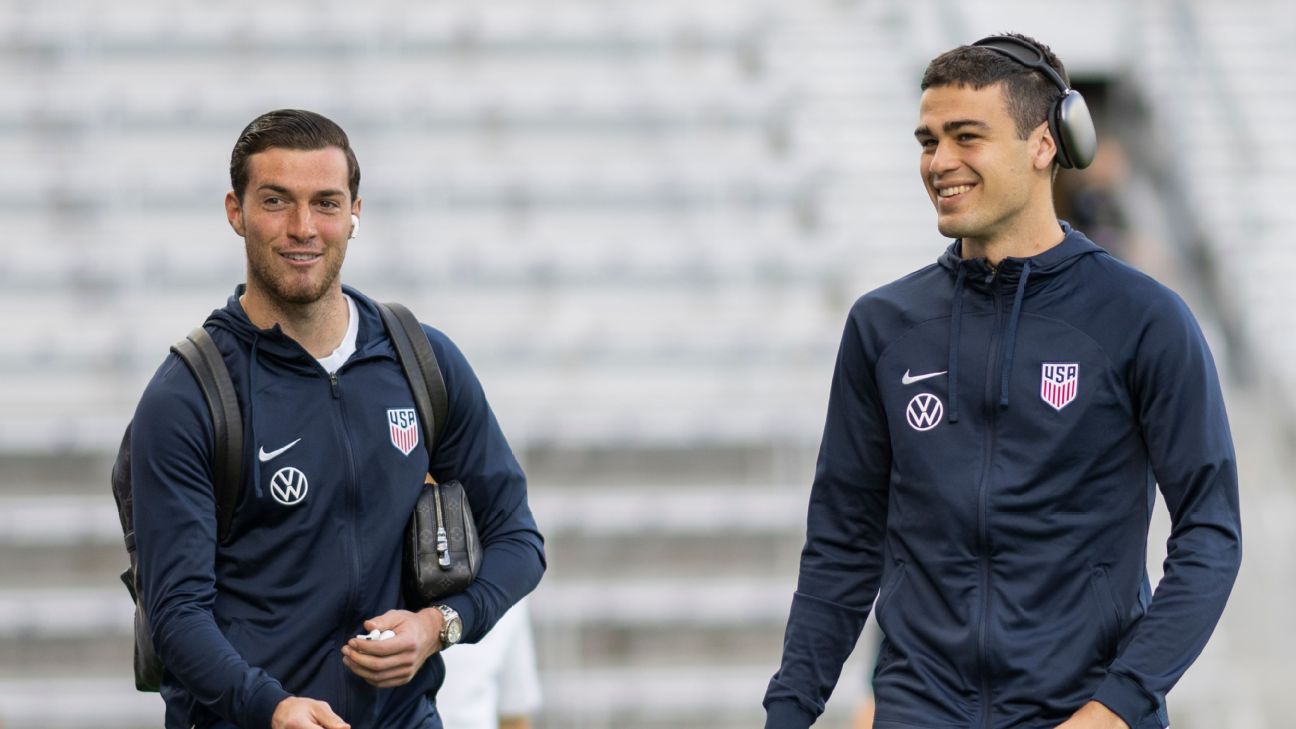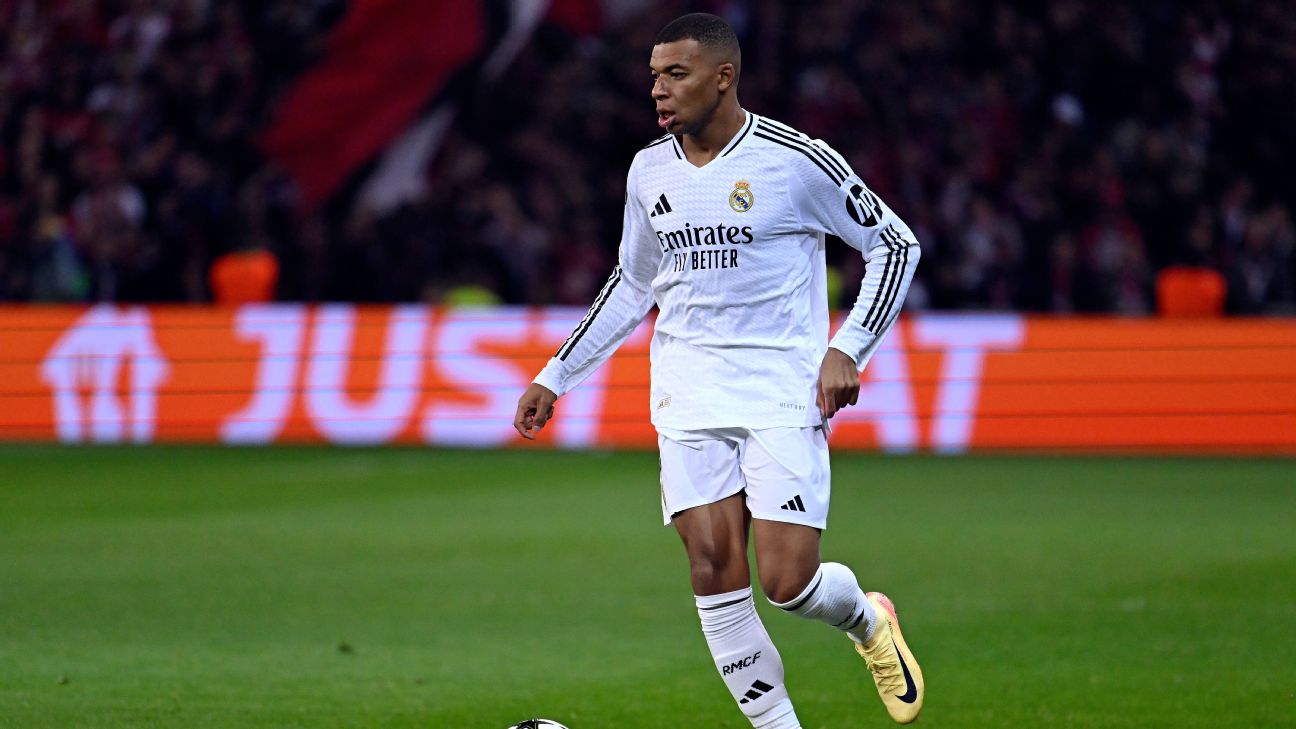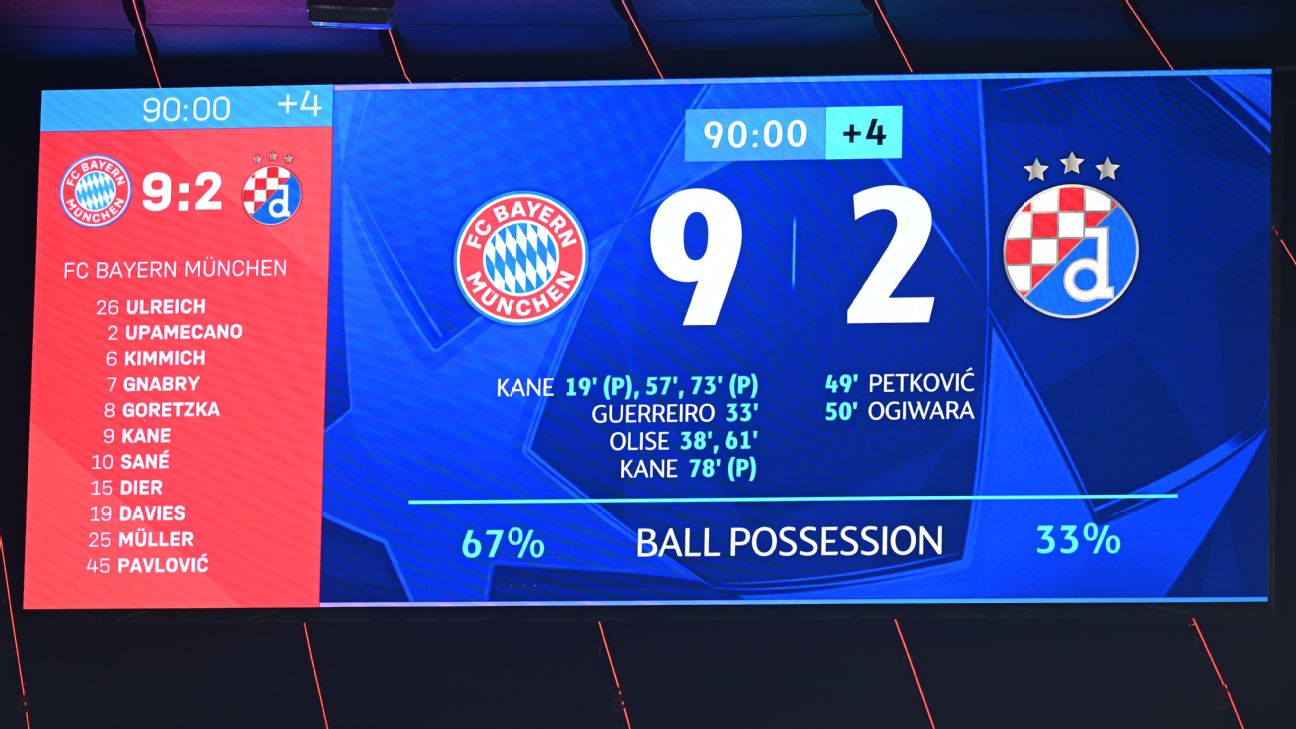I’m old enough to remember the good old days. You know, back when an American or someone FIFA might one day allow to be categorized as American made an appearance in the Danish Superliga, and everyone in a very specific and strange subsection of the internet freaked out. “Could he be the left-back of the future?”
There once was a time when the names Mix Diskerud and Edgar Castillo meant something — when their very personal choice of what country to represent seemed like it could materially affect the future success of the U.S. men’s national team. If the words “Josh Gatt” mean anything to you, then you know exactly what era I’m talking about.
Today, however, there are young Americans not only playing but flourishing for many of the best teams in Europe. We saw it at the World Cup when the USMNT — the second-youngest team in the tournament — played England to a stalemate in the group stage and reached the round of 16. Almost every U.S. player was a pro in Europe. The hopes and dreams of American soccer no longer sit on the shoulders of one specific prospect: The USMNT pool has more good players, more young players, and more good, young players than ever before.
While the Christian Pulisic generation will still lead the way at the next World Cup and maybe even the one after that, things can change quickly on the international stage, and it’s worth taking a look at the group coming up. Ahead of the USMNT’s upcoming friendly against Slovenia, who are the best 21-and-under players in the current player pool? From the guys everyone knows about to the guys that, well, no one really knows about, here is a ranking of the top 15 American U-21 prospects.
A quick methodology note for this USMNT ranking
Projecting prospects is really hard. If it were easy, the best teams in the world would just sign all the young stars before they’ve ever played a professional game.
The way you dominate players in your age-group cohort is way different from how you’d contribute at the highest level of the sport. And each individual is, well, an individual — the way they learn and develop and grow (physically and emotionally) will be unique. Plus, each player will be shaped by his daily environment, his coaches, his agents, his friends, his teammates and on and on. There are countless factors that carve out each player’s developmental path.
So, to be clear, we’re operating within incredible uncertainty for most of these names. Humility is the number one scouting tool — we can’t be confident in how any 21-and-under player’s career will pan out. So, these rankings will be heavily weighted toward players we can have a little more confidence about.
That weight, in order: We care about players who have played a lot of minutes, then we care about players who have played a lot of minutes at a younger age, then we care about what level of competition those players have played those minutes in, then we care about how they’ve performed within those minutes and only then do we really care about things like traits or tools or whatever other scouting terms you prefer.
Given all of that, I’ve ranked the players in order, but more importantly, I’ve grouped them into tiers representing how confident we can be in where their careers might end up. And for now, we’re including only players who seem likely to represent the United States at the senior level, if given the choice.
Tier One: USMNT stars — and potentially European stars, too
1. Yunus Musah, 21, midfielder, AC Milan
Among all players 21 and under across Europe’s “Big Five” leagues, these are the top nine in minutes played:
1. Eduardo Camavinga, midfielder, Real Madrid: 9,006 minutes
2. Jude Bellingham, midfielder, Real Madrid: 8,651
3. Destiny Udogie, full-back, Tottenham: 6,872
4. Florian Wirtz, attacking midfielder, Bayer Leverkusen: 6,845
5. Arnaud Kalimuendo, forward, Rennes: 6,384
6. Aaron Hickey, full-back, Brentford: 6,246
7. Castello Lukeba, center-back, RB Leipzig: 6,067
8. Pedri, midfielder, Barcelona; 5,916
9. Josko Gvardiol, center-back, Manchester City: 5,876
No. 10? It’s Yunus Musah, with 5,814 minutes — two more than Barcelona’s injured prodigy, Gavi.
While that’s not to say that Musah is on the same level as Gavi or Pedri or Florian Wirtz, the number of minutes Musah has accrued at such a young age through stints at Valencia and now AC Milan puts him in a select group of players, most of whom everyone expects to become stars.
Musah hasn’t contributed to winning in the same way that many of these players in the above list have — he’s still mainly just a fantastic ball carrier at the club level, without much other statistical signal — but we’ve now seen multiple coaches trust that playing Musah won’t get them fired. We’ve also seen Musah take on much more responsibility when he plays for the USMNT.
I don’t think he’s going to become a star midfielder for a team like Real Madrid or Manchester City because almost no one does, but it’s also not out of the question, either.
2. Gio Reyna, 21, attacking midfielder, Borussia Dortmund
Shaka Hislop and Herc Gomez explain why USMNT’s Gio Reyna needs to leave Borussia Dortmund.
A couple years ago, Gio Reyna was well ahead of Musah’s current pace. Among these same players, he’d played more minutes by the end of the 2020-21 season than anyone other than Camavinga, Wirtz and Pedri. And he’d also contributed goals, assists and incisive passing in a way that Musah still hasn’t. It’s just that he has barely played since.
As of today, among all 21-and-under players in Europe’s top leagues, 33 of them have played more career minutes than Reyna. He has started 11 league games over the past three seasons — much of that has been injury-related, but now that he’s healthy, he’s still barely playing for Borussia Dortmund. He has one start and just 238 league minutes this season.
As such, there’s a lot more uncertainty for Reyna’s career than Musah’s — his ceiling is much higher, and his floor is much lower. Such is the nature of player development that someone on this list (or not on this list) could end up having a better career than either of these two players.
But given all of their playing time at the highest level, both Reyna and Musah are way more likely to have better careers than any other individual U-21 players in the pool.
Tier Two: Fringe USMNT starters, mid-tier European pros
3. Malik Tillman, 21, attacking midfielder, PSV Eindhoven
4. Ricardo Pepi, 21, forward, PSV Eindhoven
5. Joe Scally, 21, full-back, Borussia Monchengladbach
On that same minutes list mentioned above, Joe Scally ranks 15th — one spot below Athletic Bilbao’s top prospect, Nico Williams, and one above likely superstar Jamal Musiala of Bayern Munich.
So, why is Scally fifth in this ranking? I feel quite confident that Scally is going to have a really long career as a starting full-back in one of Europe’s best leagues. He’s on Year 3 of being a consistent starter with Gladbach, who finished 10th in Scally’s first two seasons and are currently, you guessed it, 10th, midway through his third campaign. It’s just that Scally hasn’t flashed any kind of high-end physical skills or produced any notable statistical indicators. (He has three assists in three seasons.)
The best-case outcome, maybe, is that Scally becomes a top-tier hybrid defender — a conservative full-back who doesn’t get forward much but contributes some progressive passing from deeper.
Malik Tillman probably has the lowest floor of the three — and he’s not even a full-time starter for PSV this season. But in limited minutes, he has produced truly absurd statistics. Among players outside of Europe’s “Big Five” (referred to by the site FBref as the “next 14”), he’s in the 99th percentile for his position in non-penalty expected goals+assists, shot-creating actions, touches inside the penalty area and tackles.
We’ve seen the Dutch league produce plenty of wacky numbers that don’t translate to other leagues for players on the biggest teams. But also, hey, there’s a chance these numbers actually mean something. Plus, he was great in the Scottish Premiership for Rangers, and he is still under contract with Bayern Munich. There’s some signal there, too.
Ricardo Pepi is fourth because he doesn’t have Tillman’s ceiling — he has never been as good as Tillman has been over the past two seasons — but he’s also playing a much more impactful position than Scally. A lot of his production thus far in his career has been driven by a likely unsustainable level of finishing. He still doesn’t take a lot of shots for a player whose main job is to score goals, and he has yet to start a game for PSV in the league this season. He’s still quite young, and there’s plenty of development to come — I’m just not really sure where it’s all going to go.
Tier Three: Can they make it in Europe?
6. Rokas Pukstas, 19, midfielder, Hajduk Split
7. Gaga Slonina, 19, goalkeeper, Eupen
8. Kevin Paredes, 20, full-back/winger, Wolfsburg
9. Paxten Aaronson, 20, midfielder, Eintracht Frankfurt
10. Gianluca Busio, 21, midfielder, Venezia
We’ve got four players who did quite well in MLS at very young ages, have since moved to Europe and are now in a bit of a career-path netherworld. And then one Lithuanian guy from Oklahoma who is starting for the best team in Croatia.
Rokas Pukstas is a teenager, but he has been playing significant minutes for Hajduk Split since the start of last year. He’ll still be only 19 at the start of next season. There’s a ton of uncertainty over what doing that in the Croatian league actually means, but given the country’s relatively small size, the league has quite a good track record of producing future pros for Europe’s top leagues.
Gaga Slonina is under contract with Chelsea, and he’s currently on loan, starting for Eupen in the Belgian league as a teenager. Most goalkeepers don’t hit their primes until their late-20s, which means two things for Slonina’s projection: It’s really promising that he’s getting starter minutes before he turns 20, but also that there’s still a long way to go until he looks anything like his final professional form.
Neither Kevin Paredes nor Paxten Aaronson are playing much for their midtable Bundesliga teams. Paredes is playing more, but when he does, he looks like a full-back playing as a winger — lots of defensive impact, little else — and that makes sense because he is a full-back playing as a winger. Aaronson, meanwhile, has played fewer than 300 minutes over the past two seasons. There’s just not much to work with.
Gianluca Busio’s career has stalled out a bit since 2021-22, when he was starting as a teenager in Serie A and making appearances for the USMNT. After playing eight games in 2021, he has made five combined appearances in the two full years since. On top of that, Venezia were demoted to Serie B after 2021-22, and he has spent the previous two seasons playing at a much lower level of competition.
This whole section might sound depressing, but this is the trajectory for the majority of the top American players: They make it to Europe at a young age but are not quite good enough to be trusted with significant playing time in a major league at a young age. And so they either go get playing time in a lower-level league or spend a couple years training with the senior team and making the occasional substitute appearance. Eventually, they develop enough to start playing consistently in the Bundesliga or Serie A — or they don’t.
It’s likely that a few of these guys end up hitting, while the others end up having fine pro careers but never really have much of an impact for the national team.
Tier Four: How far can an MLS full-back go?
11. Caleb Wiley, 19, full-back, Atlanta United
12. John Tolkin, 21, full-back, New York Red Bulls
Among all the competitions that Stats Perform has data for, John Tolkin has played the most minutes of any 21-and-under American — by far. He’s at 10,358 minutes, while no other player is north of 8,000 minutes. Second is George Bello, a soon-to-be-22-year-old full-back for Austrian side LASK (7,994 minutes), who’s then followed by Caleb Wiley at 7,118.
It’s useful to take these three guys together. After starting for Atlanta United for two seasons as a teenager, Bello then moved to Bundesliga side Arminia Bielefeld. He would’ve been on this list back then, but we’ve since seen him struggle for playing time with a Bielefeld team that was relegated, and now he’s a sometimes-starter for the third-best team in the Austrian Bundesliga.
Because we haven’t seen Wiley and Tolkin struggle at a higher level yet, they retain higher ceilings for their projection than Bello. And here is where you start to get into the promise of the new era of American soccer. In the past, the program might’ve had one young full-back starting in MLS, and a failed European transfer would’ve been a material setback for the national team. Bello hasn’t panned out yet, but both Tolkin and Wiley seem likely to make a similar jump soon.
The odds are in favor of at least one of them working out.
Tier Five: These three — and everyone else
13. Cade Cowell, 20, forward, San Jose Earthquakes
14. Jonathan Gomez, 20, full-back, Mirandes
15. Diego Luna, 20, attacking midfield, Real Salt Lake
Truthfully, this tier could have another 30 or so players in it. There are so many young players performing at a high level in MLS and others getting playing time for lower-tier teams across Europe.
As for the ones we’ve chosen: Cade Cowell is a good athlete who has played a ton of minutes as a teenager in MLS at arguably the most premium position in the sport. The issue, so far, is that he hasn’t produced all that much: one goal and two assists last season. The hope, then, is that the experience at a young age allows him to develop the technical skills and game intelligence to combine with the physical tools and start scoring and creating goals.
Jonathan Gomez, meanwhile, was spotted by Real Sociedad back in 2021, but he has yet to appear in a LaLiga match. Instead, he’s on loan in the second division with Mirandes this year, where he has already played 1,290 minutes — his most since 2021, as a 17-year-old with Louisville City in the USL. He turned 20 in only September, but he has also never played first-division professional minutes in any country.
Herculez Gomez explains who he is most interested to watch from the USMNT’s January roster.
Lastly, Diego Luna was fantastic in his first season as a starter in MLS, but he profiles like so many young midfielders these days: lots of ball carrying, runs into the box and shot producing but not a ton of passing the ball forward or defensive interventions.
This is basically what happens to every player who would’ve been a No. 10 in the past — they’re shoe-horned into the midfield, and they produce fantastic attacking output. But to be one of these players at the highest level, you need to be really good at it to make it worth it for a top team. These clubs have forwards and full-backs who carry the attacking burden, while the midfielders play more facilitating roles, keeping possession, moving the ball forward, sometimes breaking into the box and constantly winning back possession.
In other words, it already seems likely that Luna will be a star in MLS. The question is how well his game would translate to Europe.
In the past, a 19-year-old starring in MLS would’ve been a shoe-in for a large role with the national team for a long time. Such is the depth of the program, though, that we’re still a long way away from being confident that Luna — or anyone else like him, anyone else in this tier or beyond — will ever be a significant contributor for the USMNT.
The reality for any individual player is that he’s unlikely to become a star. But the reality for the USMNT now is that they now have so many promising individual players, ones who have shown enough promise to garner MLS playing time as a teenager or earn an early transfer to Europe, that more of them will work out in the long run.
There’s a good chance, then, that the next USMNT star isn’t even on this list.



